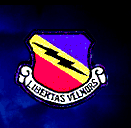 | |||
 | |||
 | |||
 | ||
CHAPTER 10 My daughters' second birthday was 13 September 1990. I looked
at their picture. What in the world was I thinking of three weeks ago, when I told Colette I wanted to come to the Middle East? I wrote her about my transfer to the 421st, and I told her how bad I felt about missing the girls' birthday. Just as I finished the letter, Orlando "Big O" Cisneros came in and asked if I wanted to go running with him and Rounder. As we passed the 421st, I began to feel sick. By the time I got back to my room, I could barely stand
up. When Doc Hirsh came by and I described my symptoms, he looked at me and said, "I hate to tell you this, Rosey, but it sounds like you've got amoebic dysentery." The news was not good. I would be grounded for a minimum of seven days. Over the next few days, I spent most of my time on the couch in our living room. When I was not there, I was in the bathroom. The dysentery left me extremely weak, but I tried to make it over to the club for at least
one meal per day. Each day crawled by. If I was not sleeping, I was listening to music, reading, or writing a letter to Colette. I also spent a lot of time thinking about the events that led me here, about how I was a child when I first decided to be a pilot. ------------------ Undergraduate Pilot Training (UPT) began on 23 April 1983 and lasted an entire year. I spent the first month of UPT in the classroom, preparing for After completing T-37 training, our class moved up the street to begin training in the Assignment night came a week before graduation and I was selected to remain at Reese AFB as a T-38 instructor pilot. On 6 April 1984, after a year of intense training, 52 pilots representing Class In September 1987, after three years as a Our class hit the flight line the first week of July 1988. I could not wait to get my hands on the controls of the Candice and Kristen were born on 13 September 1988. Our class graduated on 1 December, and two months later I was on my way to Kunsan AB, Republic of Korea, for a one-year remote tour. The first few weeks in country were tough. I was extremely homesick for Colette and the girls. But flying the I returned to the United States on 11
February 1990. After eight weeks of Squadron Officer School at Maxwell AFB, Alabama, and six weeks of F-16 LANTIRN training at Luke AFB, Arizona, Colette, the girls, and I drove through the main gate of Hill AFB, our new home.
| ||